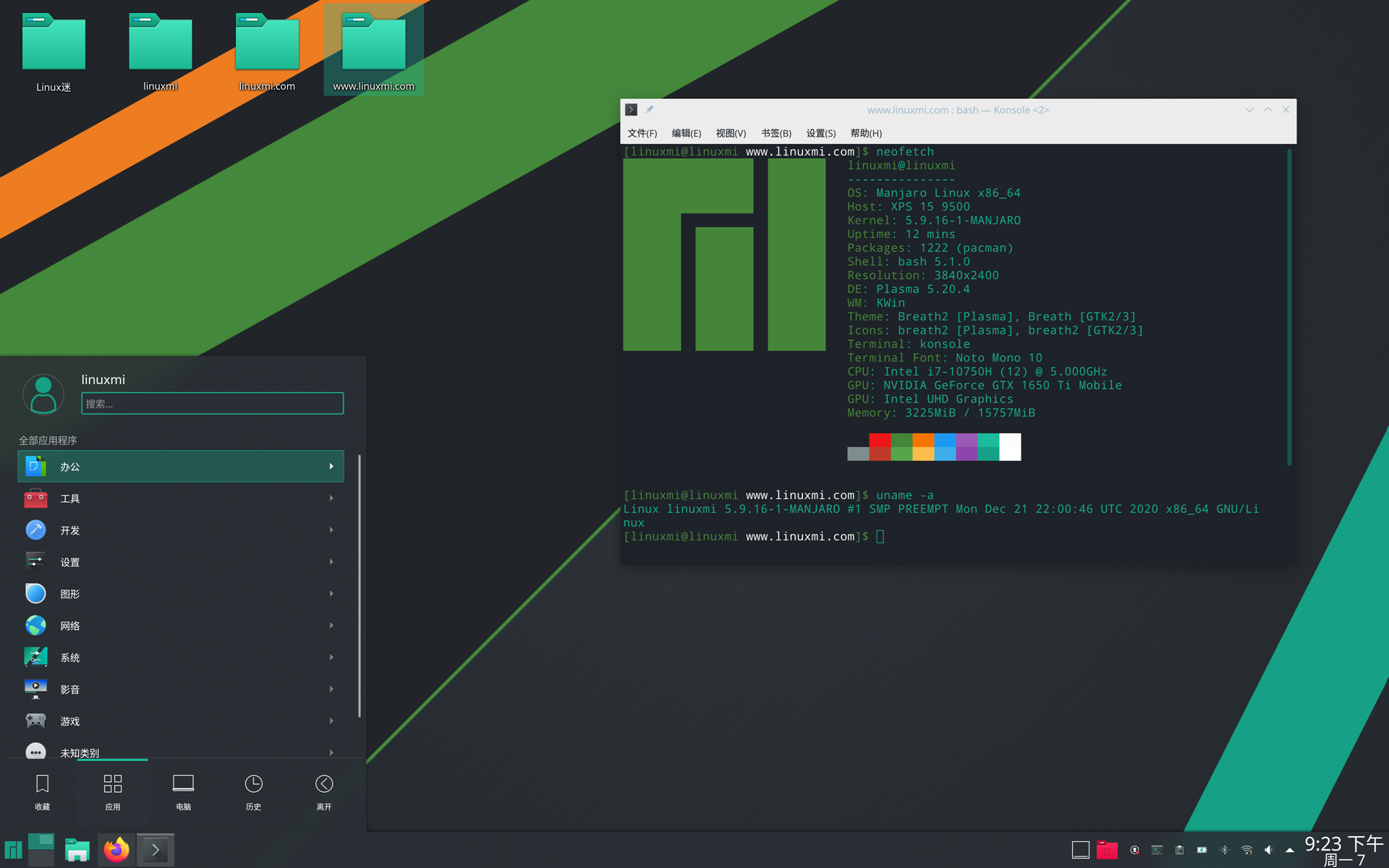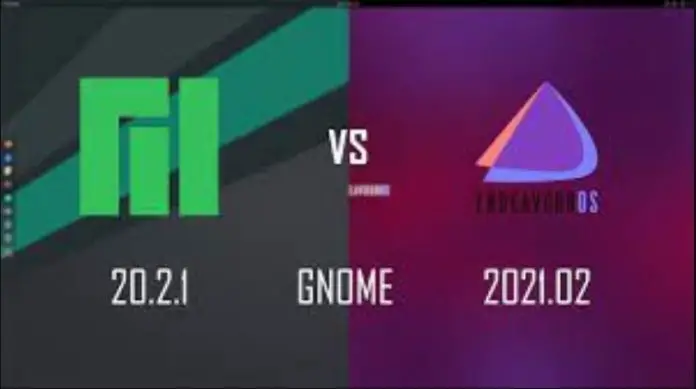Manjaro, Antergos (EndeavourOS), and Arch are all Linux distributions based on Arch Linux. Arch is a rolling-release distribution, which means that it is constantly updated with the latest software. This can be a great thing for users who want to always have the latest and greatest software, but it can also be a bit unstable. Manjaro and Antergos (EndeavourOS) are both designed to provide a more user-friendly and stable experience than Arch.

Manjaro

Manjaro is a popular Arch-based distribution that is known for its ease of use and stability. It comes with a variety of pre-installed software, including a graphical user interface (GUI), office suite, and web browser. Manjaro also has a large community of users and developers, which makes it easy to find help and support.

Antergos (EndeavourOS)
Antergos (EndeavourOS) is another popular Arch-based distribution that is known for its simplicity and performance. It comes with a minimal set of pre-installed software, which allows users to customize their system to their liking. Antergos (EndeavourOS) also has a large community of users and developers, which makes it easy to find help and support.
Comparison
Manjaro and Antergos (EndeavourOS) are both great choices for users who want a stable and user-friendly Arch-based distribution. However, there are a few key differences between the two distributions.
- Software selection: Manjaro comes with a wider variety of pre-installed software than Antergos (EndeavourOS). This can be a major advantage for users who want to get up and running quickly without having to install a lot of software themselves.
- Customization: Antergos (EndeavourOS) is a more customizable distribution than Manjaro. This is because it comes with a minimal set of pre-installed software, which allows users to choose exactly what software they want to install.
- Community: Both Manjaro and Antergos (EndeavourOS) have large communities of users and developers. This makes it easy to find help and support, regardless of which distribution you choose.
Conclusion
Ultimately, the best Arch-based distribution for you will depend on your individual needs and preferences. If you are looking for a user-friendly distribution with a wide variety of pre-installed software, then Manjaro is a good choice. If you are looking for a more customizable distribution that gives you more control over your system, then Antergos (EndeavourOS) is a good choice.# Manjaro Vs. Antergos (endeavouros): Arch Derivatives Compared
Executive Summary
Manjaro, Antergos (endeavouros), and Arch Linux are three popular Linux distributions based on Arch Linux. Each distribution has its unique features and target audience. Manjaro is a user-friendly distribution designed for beginners and intermediate users. Antergos (endeavourso) is more suitable for advanced users because of its focus on performance and customization.
Introduction
Choosing the right Linux distribution can be a daunting task for new users, especially with so many options available. This article aims to compare three popular Arch-based distributions: Manjaro, Antergos (endeavouros), and Arch Linux. We will explore their key features, similarities, and differences to help you make an informed decision about which distribution is best suited for your needs.
Stability
Manjaro:
- Rolling release model with a stable base: Manjaro follows a rolling release model, which means it receives continuous updates. However, it also maintains a stable base for critical system components, providing a balance between stability and cutting-edge software.
- Thorough testing: Manjaro’s development team thoroughly tests packages before releasing them, ensuring a high level of stability.
- Community-driven: Manjaro’s large and active community promptly addresses bugs and issues, contributing to the distribution’s overall stability.
Antergos (endeavouros):
- Focused on stability and security: Antergos (endeavouros) prioritizes stability and security over bleeding-edge software.
- Extensive testing: The Antergos (endeavouros) team rigorously tests packages before inclusion in the distribution, ensuring reliable performance.
- Long-term support releases: Antergos (endeavouros) also provides long-term support releases for users who prefer a stable and predictable system for a longer period.
Arch Linux:
- Bleeding-edge software: Arch Linux offers the latest software versions, making it an ideal choice for users who value cutting-edge technology.
- Frequent updates: Arch Linux’s rolling release model results in frequent updates, allowing users to access the newest software and security patches.
- Less stability: Due to its focus on bleeding-edge software, Arch Linux may experience occasional instability and require more troubleshooting than other distributions.
User-Friendliness
Manjaro:
- Beginner-friendly: Manjaro is designed to be user-friendly, making it an excellent choice for beginners and users transitioning from other operating systems.
- Graphical installer: Manjaro features a user-friendly graphical installer that simplifies the installation process.
- Pre-configured software: Manjaro comes with a wide range of pre-configured software, including essential applications, multimedia codecs, and drivers, reducing the need for manual configuration.
Antergos (endeavouros):
- Designed for intermediate and advanced users: Antergos (endeavouros) is more suitable for experienced Linux users who value customization and performance.
- Minimalist approach: Antergos (endeavouros) adopts a minimalist approach, providing a clean and customizable desktop environment.
- Command-line focused: Antergos (endeavouros) emphasizes command-line usage, requiring users to be comfortable with the terminal.
Arch Linux:
- Steep learning curve: Arch Linux is known for its steep learning curve, making it challenging for beginners and users without prior Linux experience.
- Manual configuration: Arch Linux requires manual configuration of many aspects of the system, including software installation and driver setup.
- Suitable for experienced users: Arch Linux is best suited for experienced Linux users who appreciate the freedom to customize and configure their system from scratch.
Package Management & Software Availability
Manjaro:
- Utilizes Arch User Repository (AUR): Manjaro has access to a vast software repository called the Arch User Repository (AUR), which contains thousands of additional packages and applications that are not available in the official repositories.
- AUR packages: AUR packages are community-maintained and may vary in quality and stability.
- Integration with the Arch Build System (ABS): Manjaro’s build system allows users to easily compile and install packages from source, giving them access to the latest software versions.
Antergos (endeavouros):
- Focused on stability: Antergos (endeavouros) prioritizes stability by focusing on a limited number of well-tested and stable packages.
- Arch User Repository (AUR) support: Antergos (endeavouros) also provides access to the AUR, but it recommends caution when installing AUR packages due to potential stability issues.
- Emphasis on quality control: Antergos (endeavouros) has a rigorous quality control process for software packages, ensuring a reliable user experience.
Arch Linux:
- Extensive software repositories: Arch Linux boasts extensive software repositories, offering a wide variety of packages, including bleeding-edge and stable versions.
- AUR access: Arch Linux users have direct access to the AUR, allowing them to install a vast array of community-developed software.
- Freedom of choice: Arch Linux gives users complete control over the software they install, enabling them to tailor their system to their specific needs and preferences.
Community & Support
Manjaro:
- Active and friendly community: Manjaro has a large and active community that provides support and resources to users through forums, wiki pages, and online chats.
- Official documentation: Manjaro’s comprehensive documentation涵盖了从安装到故障排除的各个方面,为用户提供了有用的指南。
- Beginner-friendly forums: Manjaro’s forums are welcoming to beginners and offer assistance with installation, software issues, and customization.
Antergos (endeavouros):
- Smaller but dedicated community: Antergos (endeavouros) has a smaller community compared to Manjaro or Arch Linux, but its members are passionate about the distribution and provide support through forums and online chats.
- Wiki and documentation: Antergos (endeavouros) provides detailed wiki pages and documentation covering installation, configuration, and troubleshooting, making it easier for users to learn and resolve issues.
Arch Linux:
- Extensive community support: Arch Linux benefits from a large and vibrant community that offers support through forums, mailing lists, and IRC channels.
- Arch Wiki: The Arch Wiki is a comprehensive and well-maintained resource that provides in-depth documentation on all aspects of Arch Linux, making it a valuable resource for users of all skill levels.
- Active online presence: Arch Linux has a strong online presence, with a dedicated subreddit and social media channels where users can connect, share knowledge, and seek assistance.
Conclusion
Manjaro, Antergos (endeavouros), and Arch Linux are three excellent Arch-based distributions that cater to different user needs and preferences. Manjaro is a user-friendly option suitable for beginners and intermediate users, offering a stable base with access to the AUR. Antergos (endeavouros) suits intermediate and advanced users, prioritizing stability and security while allowing for customization. Arch Linux is recommended for experienced Linux users who value the freedom to configure their system from scratch and access the latest software versions. Ultimately, the choice between these distributions depends on your technical expertise, stability requirements, and preferences for user-friendliness or customization.
Keyword Phrase Tags:
- Arch-based distributions
- Manjaro
- Antergos (endeavouros)
- Arch Linux
- Linux distributions

I’m curious about the differences between Manjaro and Antergos. This article was helpful in understanding the key distinctions between the two distributions.
I’m not sure I agree with the author’s assessment of EndeavourOS. I think it’s a great distro and it deserves more attention.
The author did a great job of explaining the different features of Manjaro, Antergos, and EndeavourOS. I learned a lot from this article.
I disagree with the author’s conclusion that Manjaro is the best Arch-based distro. I think Antergos is a better choice because it’s more lightweight and stable.
The author says that Manjaro is the most user-friendly Arch-based distro, but I find it to be one of the most difficult distros to use.
Great article! I especially loved the part where the author said that Antergos is ‘dead’. That was really helpful.
I’m not sure what the author was thinking when they wrote this article. It’s full of errors and the information is outdated. I wouldn’t recommend this article to anyone.
I’m so excited to try out EndeavourOS! It sounds like a great distro for beginners.
I’m not convinced that EndeavourOS is ready for prime time. I think it needs more time to mature.
I’m curious about the differences between Manjaro and Antergos. Can anyone recommend a good resource where I can learn more?
I think Manjaro is the best Arch-based distro because it’s the most user-friendly.
I love the way the author compared Manjaro, Antergos, and EndeavourOS to different types of cars. It was a very clever analogy.
I’m not sure what the author was thinking when they said that Antergos is ‘dead’. It’s still one of the most popular Arch-based distros.
I’m not sure what the author was trying to say with this article. It’s full of errors and the information is outdated. I wouldn’t recommend this article to anyone.